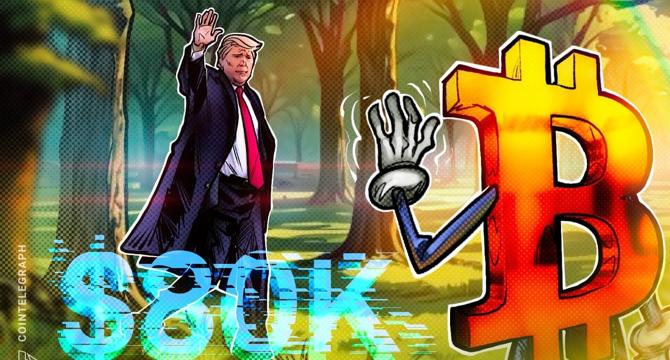Coin Telegraph
3w
327

Image Credit: Coin Telegraph
Timeline: How Trump tariffs dragged Bitcoin below $80K
- Since Trump's inauguration, Bitcoin's price has fluctuated from $109,000 to below $78,000 due to major tariff announcements affecting global markets.
- The back-and-forth on tariffs has created uncertainty, impacting market sentiment and causing Bitcoin to dip below $100,000 at various points.
- Tariff tensions with Colombia and disruptions from the rise of DeepSeek contributed to Bitcoin's volatility in late January.
- In February, Trump's executive order on tariffs led to Bitcoin falling below $93,000, with ongoing trade war developments affecting its price.
- Bitcoin faced more challenges in mid-February as metal tariffs increased and the Bybit hack occurred, pushing its price below $90,000.
- Further bearish pressure in late February, including potential copper tariffs, led to Bitcoin dropping below $80,000 for the first time since November.
- In March, Trump's tariff reviews and cryptocurrency plans caused Bitcoin's price to fluctuate around $90,000, with ongoing trade tensions impacting its value.
- By mid-March, a softer stance on tariffs led to market recovery, with Bitcoin rising to $88,474, but uncertainties remain as 'Liberation Day' approaches.
- Investors are advised to monitor traditional market developments and potential impacts of upcoming tariffs on Bitcoin and global markets.
- As April 2 nears, the crypto market remains fragile, and investors are preparing for the implications of further tariff decisions by Trump.
Read Full Article
19 Likes
For uninterrupted reading, download the app